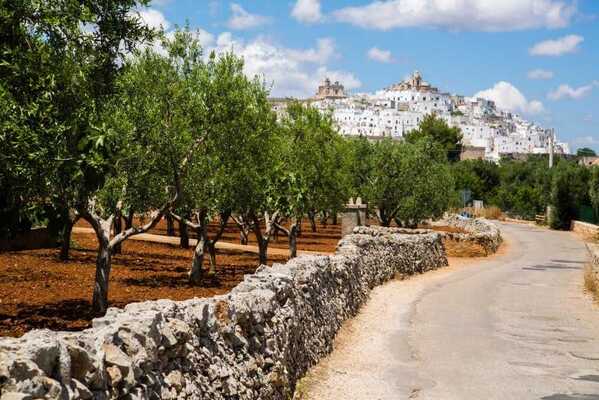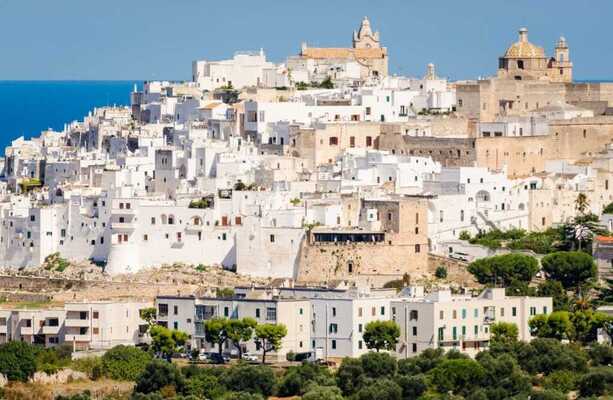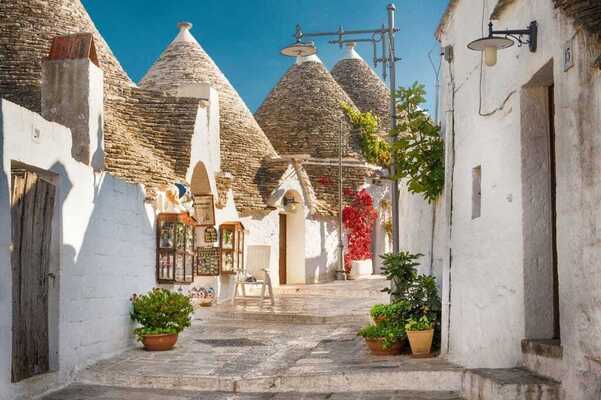Locorotondo – among the most beautiful village in Puglia
Locorotondo is a small village in the Itria Valley, among the most beautiful in Puglia and Italy which, as the name suggests, has a typical circular plan where it is possible to admire the typical houses with sloping roofs called cummerse. The visitor can enjoy the tranquility of the alleys of the historic center, embellished with flowers and well maintained by the inhabitants of the town or, again, the beauty of the panoramic points to be photographed or the ancient churches to visit.
Last Christmas, the city recorded a record number of visitors who came to admire the beauty of the decorations that embellished the town. Locorotondo, in fact, has been so appreciated for its Christmas decorations that it has become one of the most photographed and posted villages on Instagram: a great victory for this small town which is still appreciated all year round by anyone who arrives there.

What to see in Locorotondo
The beauty of Locorotondo lies in the characteristic alleys where you can get lost and come across churches, particular houses with sloping roofs covered in limestone called chiancarelle, artisan workshops which refer to the popular traditions still alive in the town. One of the most important churches in Locorotondo is that of San Rocco, patron saint of the city who, according to tradition, ward off the plague.
Other churches to visit are the Church of Santa Maria Addolorata, the Church of Santa Maria Annunziata, the Minor Basilica of Saints Cosma and Damiano or, again, the Church of the Madonna della Greca and the Church in honor of San Giorgio. There is also no shortage of buildings of historical value such as Palazzo Morelli from the Baroque period, the Clock Tower and the Town Hall where the civic library is currently located. It is also possible to stop and visit the oldest trullo in Puglia, dating back to 1509, in the Marziolla district or admire a breathtaking view of the valley in the Serafino district.
In the evening, you can spend pleasant moments with your friends or loved ones at one of the numerous cocktail bars or pubs which, especially in summer, enliven the historic center with events, live music and DJ sets.
Traditions and curiosities of Locorotondo
Popular traditions are deeply felt in Locorotondo: in April the festival in honor of San Giorgio Martire takes place with the “Gift Ceremony” i.e. the handing over of the keys to the city by the Mayor to the Saint or, again, the festival in honor of San Rocco which takes place in August with a very fascinating event called Diéne, that is, processions of musical bands through the historic center singing typical folklore songs. The party is also accompanied by fireworks displays, illuminations and large meat-based feasts.
Furthermore, on the first Sunday of August, the Holy Family is celebrated and on the 15th of August, the procession of Santa Maria Assunta. Other heartfelt religious festivals are the one which takes place on the third Sunday of September, the Feast of the Crucifix and, in October, the festival dedicated to San Marco and the patronal festivals of Saints Cosma and Damiano and of the Madonna della Catena.
Not only traditions but also cinema: several films have been shot among the beautiful streets of Locorotondo such as “Mio cognato” with Sergio Rubini, “Così è la vita” with Aldo, Giovanni and Giacomo and “Baciami piccina” with Vincenzo Salemme.

What to eat
Locorotondo offers a culinary experience made up of typical products and traditional popular dishes but there is also no shortage of excellent wine products such as “Bianco Locorotondo DOC“, a wine that is well suited to appetizers but also to fish-based dishes.
Among the excellent gastronomy products, used to create unique dishes, there is meat such as lamb tripe rolls (gnumerèdde suffuchète) tied with animal intestines and cooked in typical terracotta pans; again, orecchiette with turnip greens or another handmade pasta with durum wheat semolina and eggs called tridd, accompanied by pecorino cheese and chopped parsley with turkey broth. There is no shortage of simple and genuine dishes such as broad beans and chicory (macco with vegetables), i.e. white broad beans cooked in the pignata and beaten with olive oil to make a puree, accompanied by chicory. Again, focacce, grilled meat or cutlet with mozzarella and mushrooms (the cottie).
How to reach Locorotondo
The beautiful village of Locorotondo can be reached by all means of transport:
- by plane, the closest airports are Bari Palese (about 75 km away) and Brindisi-Casale (about 55 km away): from here it will be possible, once you reach the station, to travel by train, bus or renting a car.
- by train, from Bari it will be sufficient to reach Fasano station with Ferrovie dello Stato and then take the bus to Locorotondo or take the Ferrovia Sud-Est to Locorotondo station. For those arriving from Taranto, it will be sufficient to take the South-East Railways to Locorotondo station; finally, for those arriving from Lecce-Brindisi, via the State Railways, it is necessary to reach the Fasano station and from here continue by bus to the town.
- by car, from Bari there are two alternatives: either take the SS16 with the Fasano exit or the SS100 with the Turi exit and then the SS172 (Statale dei Trulli). If you come from Taranto, however, you will need to take the Statale 172 Dir. while from Lecce-Brindisi take the SS378 with the Fasano exit and then take the 172 Dir.

Itria Valley
In this large and flat karst basin, in which the trulli, the verdant countryside, carefully cultivated with vineyards, vegetable gardens, fruit trees, the dry stone walls, the tiny country lanes contribute to the definition of a pleasant and fascinating landscape picture.

Ostuni: the “white city”
Picturesque and renowned tourist destination, it boasts a medieval village with winding streets and whitewashed houses. Divided between the old city known as the "land" and the more recent "marina" one, it offers evocative views of stairways, alleys and small squares overlooked by shops, small shops and typical restaurants.

Alberobello: the City of Trulli
Characterized by an entire neighborhood of trulli, its historical importance and architectural uniqueness, it has been declared a UNESCO heritage site
